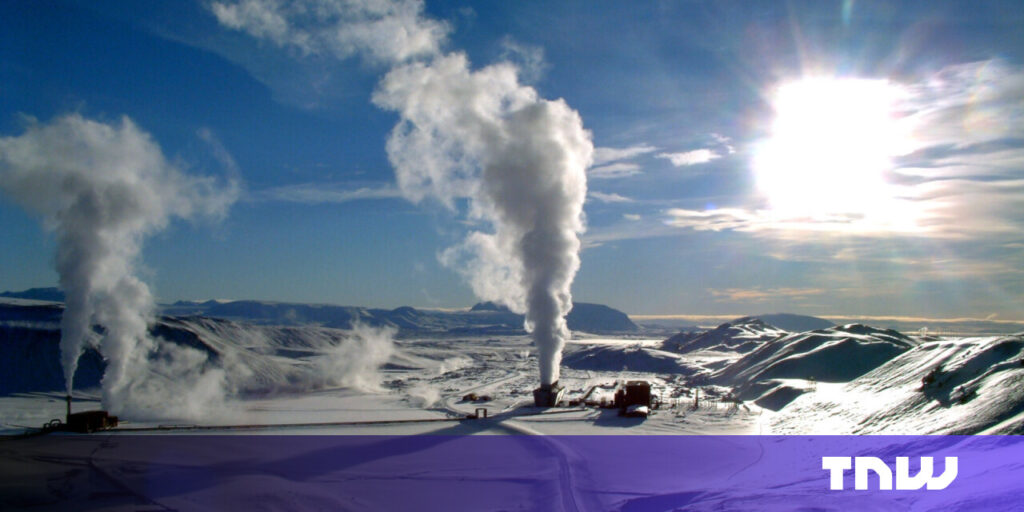In Bavaria’s scenic hills, a groundbreaking project is underway that could revolutionize Europe’s energy landscape. Engineers are delving 8 km beneath the earth’s surface, aiming to harness the near-limitless power of geothermal energy. This initiative, spearheaded by Canadian company Eavor, seeks to offer a sustainable alternative to fossil fuels for Europe’s cities and homes.
Eavor is among a new wave of startups aiming to position geothermal energy as a key player in the sustainable energy sector. Utilizing advanced technologies such as plasma pulse drills, steel shot cannons, and robotic worms, Eavor plans to tap into Earth’s heat from virtually any location.
Unlike traditional geothermal plants that depend on rare underground water reservoirs, Eavor’s system uses hot rocks and a closed loop of pipes, with depth being a critical factor. “Our system works like a radiator, but instead of radiating heat, it conducts it from superheated rocks,” stated Robert Winsloe, Eavor’s executive vice president, in an interview with TNW. “By going deep enough, we can harvest heat from almost any location without the need for subterranean aquifers.”

Innovative Geothermal Approach
In the Bavarian town of Geretsried, Eavor’s geothermal plant is set to replace natural gas with sustainable heat for 25,000 residents. The project involves drilling 4,500 meters vertically to reach 160°C rock, then extending horizontally for 3,000 to 3,500 meters before looping back upwards through another vertical well. This creates a closed-loop circuit isolated from the surrounding earth.
The water in this loop circulates naturally, heating up as it descends and rising as it absorbs heat, a process called thermosiphon, which eliminates the need for pumps and increases energy efficiency. At the surface, heat exchangers transfer this heat to a separate water network, part of the district heating system. During summer, when heating demand falls, the system switches to generating electricity via a steam turbine.
This €370 million project, which began drilling in July 2023, is supported by €91.6 million from the EU’s Innovation Fund and a €45 million European Investment Bank loan. Eavor plans to produce the first power from this site by the end of 2025. Sanjeev Kumar from the European Geothermal Energy Council noted, “All eyes are on Geretsried. If it works, it could seriously move the needle on geothermal.”
Exploring Geothermal Potential
Europe’s history with geothermal energy dates back over 2,000 years, with the Romans utilizing it to heat their villas. The first industrial geothermal plant was launched in Larderello, Italy, in 1911, and by the 1930s, Iceland had converted its volcanic water into a district energy source. However, geothermal currently accounts for only 0.2% of Europe’s electricity and 0.7% of its heating.
Geothermal energy is uniquely capable of providing constant, baseload power, crucial when wind and solar are inactive. It also requires less land compared to solar or wind farms and can produce both heat and electricity, making it an attractive alternative to natural gas. Kumar remarked, “Russia’s invasion of Ukraine has changed everything. Europe is now piling into geothermal as it looks for sovereign, clean sources of energy.”

The International Energy Agency suggests geothermal could meet global electricity needs 150 times over, though it remains costly and geographically restricted. Traditional methods require locations with natural hot water near the surface, and concerns about earthquake risks persist. Eavor and over 100 startups aim to disrupt this model, focusing on cheaper and safer drilling technologies.
Pioneering Drilling Technologies
Slovakia’s GA Drilling is among the companies developing innovative drilling solutions. Their rig combines a diamond-tipped drill with plasma pulse technology to weaken and penetrate hard rock formations. Matus Gajdos, GA Drilling’s head of product, stated, “The key to scaling geothermal is getting drill costs down,” asserting that their system could potentially double drilling speed.
GA Drilling aims to reach depths of 10 km, nearing the deepest holes ever drilled. At such depths, water becomes “supercritical,” a state that could vastly increase energy extraction from deep rock formations. Initial projects are planned at 6 km depth in the Netherlands, with future licensing possibilities for their technology.

Many geothermal startups, including Eavor, are founded by former oil and gas industry professionals, leveraging their expertise in drilling and subsurface engineering. Canopus Drilling, led by ex-Shell executive Jan Jette Blangé, is reviving an old oil-and-gas technique using steel shots to fracture rock. Their technology could significantly improve heat extraction efficiency.
Exploring Shallow Geothermal
Not all geothermal systems require deep drilling. Ground-source heat pumps, which utilize stable underground temperatures for heating and cooling, are highly efficient and relatively simple to install. Moritz Pill, co-founder of Swiss startup Borobotics, noted, “In many European countries, at a depth of 250 metres, you have an average temperature of 14°C.” Borobotics’ autonomous drilling machine, the “world’s most powerful worm,” aims to reduce installation costs for these systems.

The EU’s REPowerEU plan aims to install 43 million new heat pumps by 2030. Borobotics’ technology could help achieve this target more affordably. Torsten Kolind, founder of Underground Energy Ventures, believes both deep and shallow geothermal have roles in Europe’s energy future, emphasizing the continent’s advantageous position for geothermal deployment.
Geothermal’s Future in Europe
European nations are increasingly recognizing geothermal’s potential. France plans to double geothermal production by 2028, the Netherlands aims to nearly triple it by 2030, and Germany seeks a tenfold increase in geothermal heating by the same year. Most new geothermal energy will be used for heating, as existing infrastructure supports this use more readily than electricity generation.
Despite its promise, geothermal energy faces challenges, including high construction costs and the need for government support to attract investment. Incentives like feed-in tariffs, which Germany has offered Eavor, could encourage development. Public concerns about earthquake risks also need to be addressed, although Eavor claims its methods are safe.
The International Energy Agency projects geothermal could provide 15% of global energy by 2050, a significant increase from today. If startups can demonstrate the scalability of their innovations, geothermal energy may usher in a new era of sustainable power.
Original Story at thenextweb.com
